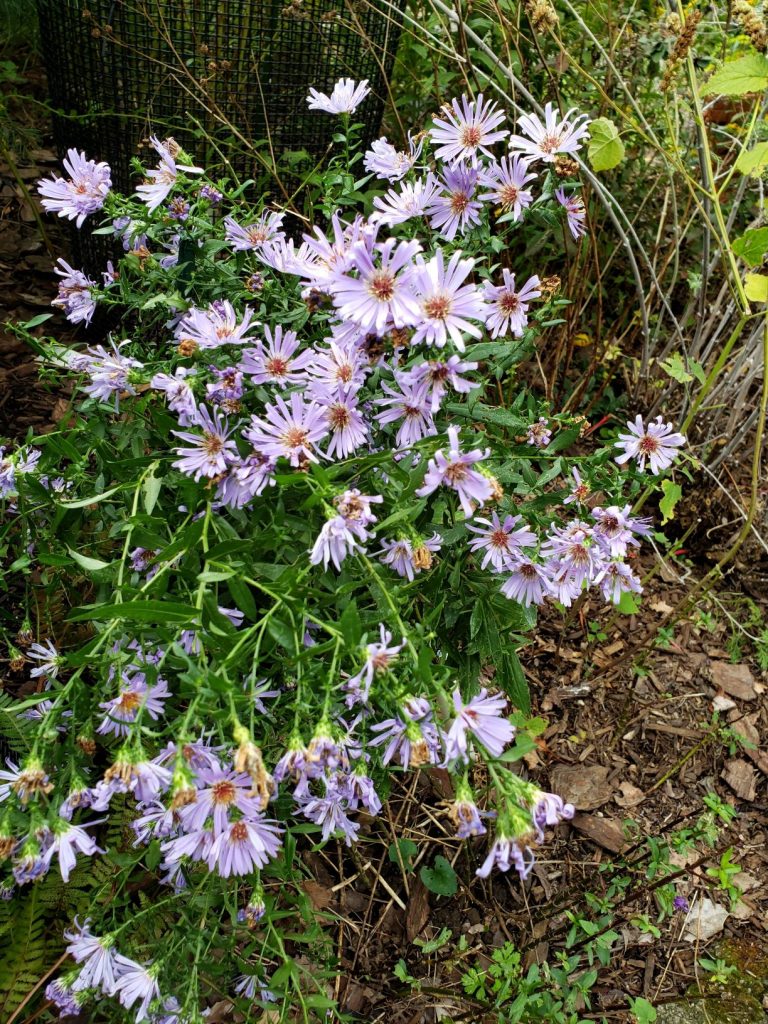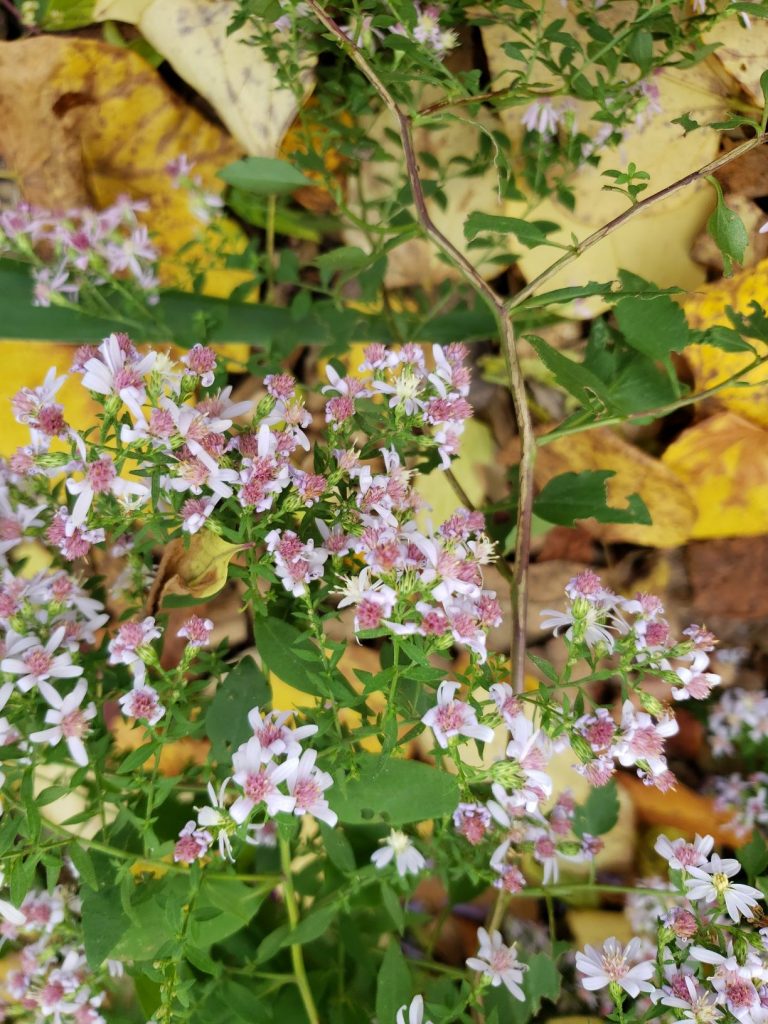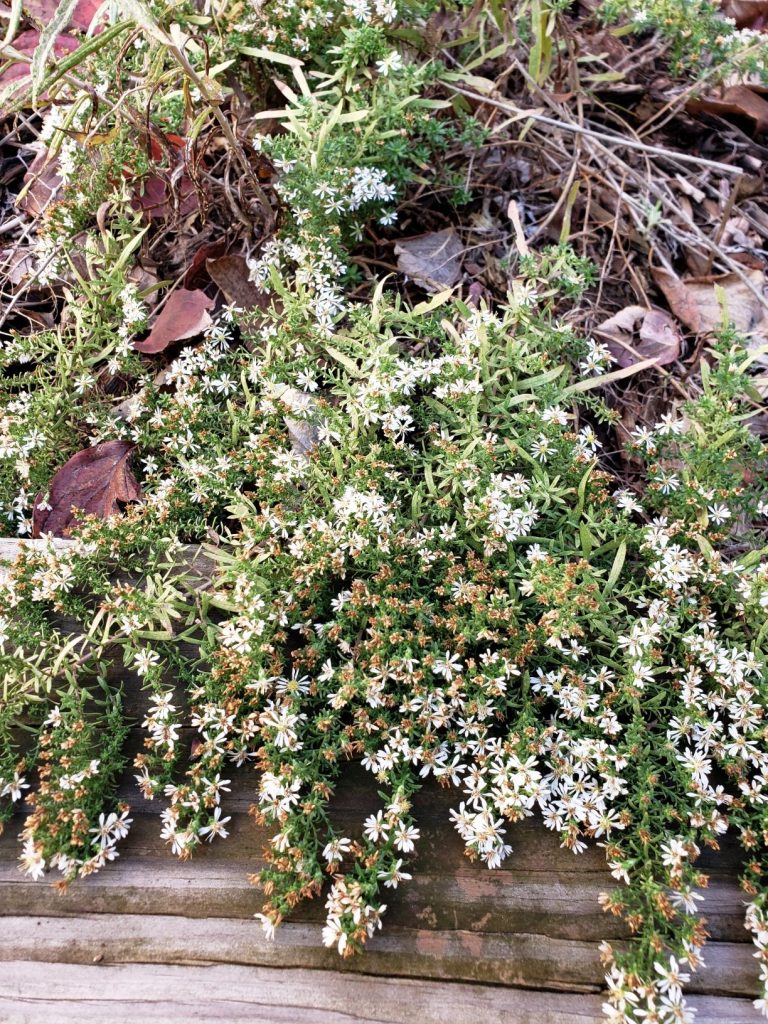During the fall, so many gardeners are seduced by the late blooms of mums and plant them to beautify their gardens. But mums are native to Asia and of little value to pollinators. Not to mention they look rather stiff. There is something better you could be using to give your garden not only color, but make it more eco-friendly by providing food for pollinators. These late-blooming stars are our terrific native asters which are perennial and don’t need to be replaced every year.
Look closely at asters because they are fooling you. They are composites, a family whose flowers are made up of inflorescences—clusters of little flowers that appear as one large flower. They are considered the most highly evolved plants and are one of the most important food sources for late-season insects as they bloom late and provide nectar and pollen when little else is available to them.
There are so many species of asters that you can find one to meet your garden needs, from sun to shade or moist to dry soils. In addition, their leaves feed over 100 caterpillars in North America. This is important because caterpillars metamorphose into desirable butterflies and moths and are a vital food source for birds.
The two most commonly available asters are probably New York aster (Symphyotrichum novi-belgii) and New England aster (Symphyotrichum novi-angliae). These are very similar in appearance, with New York aster generally being lower growing (2-to-4 feet) with thinner stems and smooth leaves. New England aster tends to grow 3-to-4 feet tall with hairy leaves and thicker stems that make them more suitable as cut flowers. Both of these need full sun. Many asters, including these two, benefit from being cut back between Memorial Day and the end of June in order to keep the plants more compact and upright.
For those sun-challenged gardeners who feel they can’t have flowering plants, there are asters for you! If your garden can squeeze in about 3 hours of sun per day, try blue wood aster (Symphyotrichum cordifolium) or white wood aster (Eurybia divaricata). These will help pollinators who visit your fall garden. White wood aster tolerates not only shade, but also dry shade such as that under trees. Blue wood aster is amenable to soils ranging from dry to moist but not wet.
Is there a very wet spot in your garden? There is an aster for that—bog aster (Oclemena nemoralis)! The Chippewa used its rhizomes to make ear drops and soothe sore ears.
When you take a close look at aster flowers, you will notice that some have yellow centers that centers will turn dark. This is said to be a way of signaling pollinators to not waste their time looking for food in the dark centers, as those were already pollinated, whereas the yellow ones have not been.
When the weather warms up this coming spring, remember to plan for beautiful fall blooms by purchasing asters for your garden!



